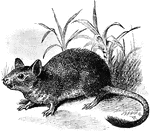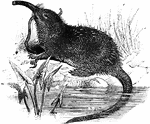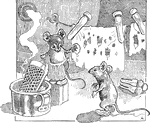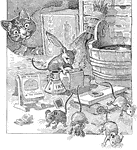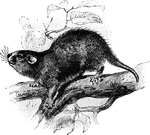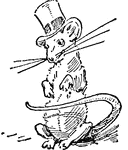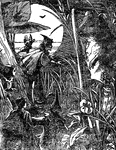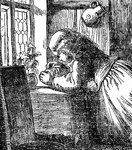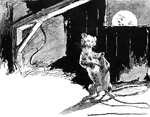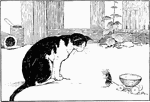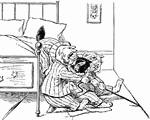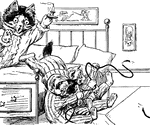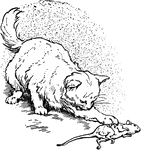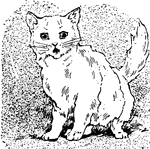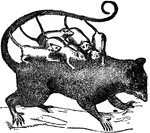
Opossum
A class of marsupial mammals native to America. They include a large number of species, ranging in size…
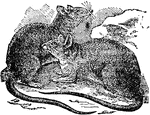
Rat
A class of rodent mammals belonging to the mouse family, but including only the larger species. A number…
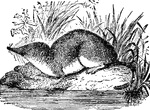
Shrew
A genus of animals resembling the mouse and the dormouse, but distinguished from them in having soft…
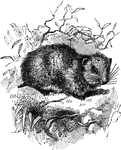
Combrat
A genus of small rodents with small ears, a mere stump for a tail, and lengthened hind limbs.
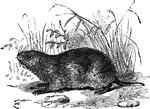
Tucutucu
Usually 8 to 10 inches long with a tail 2 to 3 inches in length, small eyes, rudimentary ears and a…
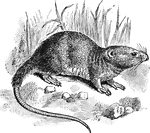
Hedgehog Rat
A rat having a long scaly tail, and lacks the spines in the pelage which most of this group of hedgehog…
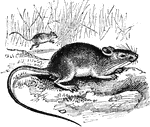
Deer Mouse
It is about 4 inches long with a long scaly tail and enlarged hind quarters and hind feet, allowing…
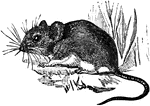
Deer Mouse
It is about 4 inches long with a long scaly tail and enlarged hind quarters and hind feet, allowing…
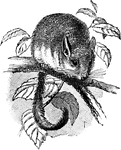
Dormouse
A small mouse. Their shape is neat and gracile; they have full eyes, shapely limbs, and long hairy tails.
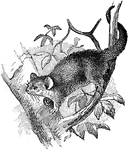
Dormouse Phalanger
A small flying dormouse wit hony three molars on the top and three on the bottom.
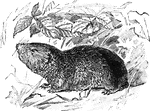
Pine Mouse
A North american meadow mouse. About 4 inches long of a rich dark reddish brown color, with very smooth,…
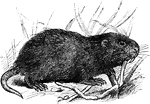
Bamboo Rat
A mole—rat having the eyes open, though very small, ears naked and very short, thumb rudimentary,…
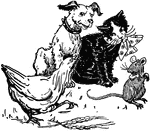
Animals
Characters from "The Little Red Hen." The dog, cat, and rat do not want to help the hen make bread.
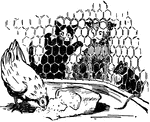
Hen Eating Bread
The Little Red Hen enjoys the bread she made. The cat, dog, and rat do not get any because they did…
Animals
The Little Red Hen enjoys gives the bread to her chicks because they worked to make the bread. The cat,…
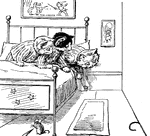
Three Kittens 8
Three kittens hear a mouse and think they see the tail. The mouse is under the bed, but they do not…
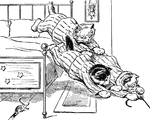
Three Kittens 9
Three kittens chase what they think is a mouse tail while the actual mouse under the bed runs away in…
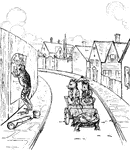
Mice in a Turtle-Drawn Carriage.
A mouse couple in their turtle-drawn carriage watching a frog post signs.
Larger Mouse-Ear Chickweed
Of the pink family (Caryophyllaceae), the larger mouse-ear chickweed (Cerastium vulgatum).

Mouse-Ear Chickweed
"Compound cyme of mouse-ear chickweed. t, the terminal (oldest) flower." -Bergen, 1896
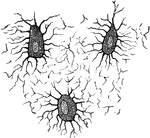
Osteoblasts
Nucleated none cells (osteoblasts) and their processes, contained in the one lacunae and their canaliculi…

Ochna
"Ochna dubia. 1. expanded flower; 2. section of pistil and stamens; 3. pistil; 4. section of a ripe…
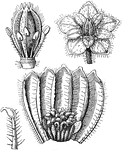
Mouse-Ear Chickweed
"Monstrous flower of a Cerastium; 2. the pistil and stamens separate; 3. the ovary forced open to show…

Field Mouse
The Meadow Vole (Microtus pennsylvanicus), sometimes called the Field Mouse or Meadow Mouse, is a small…

Deer Mouse
The genus Peromyscus contains species commonly referred to as deer mice. This is a genus of New World…

Tit Bird
The tits, chickadees, and titmice comprise Paridae, a large family of small passerine birds which occur…
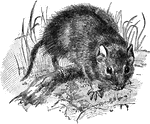
Schizodon
"Schizodon fuscus...A genus of South American octodont rodents, related to Ctenomys" (Tuco-tuco). -Whitney,…

Shrew
Shrews are small, superficially mouse-like mammals of the family Soricidae. Although their external…

Dormouse
Dormice are rodents of the family Gliridae. (This family is also variously called Myoxidae or Muscardinidae…

Fennel
Fennel (Foeniculum vulgare) is a plant species in the genus Foeniculum (treated as the sole species…

Hispid Cotton Rat
The Hispid Cotton Rat (Sigmodon hispidus) is a small rodent in the Cricetidae family of New World rats…
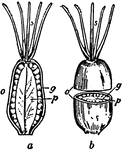
Mouse-ear Chickweed
An illustration of the pistil, female reproductive part of the flower, from the mouse-ear chickweed.…
